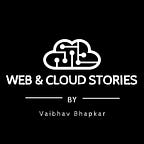Cloud Computing
Cloud computing is process for enabling ubiquitous, convenient and on-demand access to a shared pool of configurable resources (e.g. network, servers, storage, applications, and services) that can be rapidly provisioned and released with minimal effort and service provider interaction.
A] Industry Transformation:
Mainframe -> Client/Server -> Web -> Virtualization -> IT as a Service
- Mainframes are a type of computer that generally are known for their large size, amount of storage, processing power and high level of reliability. the mainframe is the phase in transformation where computing power is stored in some specific location so to perform some computation you need to be present in that location.
- The client-server model is a distributed application structure that partitions tasks or workloads between the providers of a resource or service, called servers, and service requesters called clients. Client-server is also a big evolution in industry transformation where compute is possible from other devices in case of the connected network where the server is responsible for performing computation.
- With the arrival of the Internet and the Web, we can now access information, even do business from virtually anywhere. For this fulfillment, there are many challenges ahead like designing and developing faster, lighter and more robust applications that can be delivered across the Web using the HTTP protocol. This sort of application is called Web applications.
- In computing, virtualization refers to the act of creating a virtual version of something, including virtual computer hardware platforms, storage devices, and computer network resources. Virtualization you can say it as software which simulates the hardware functionality.
- IT as a service is an operational model where the information technology service provider delivers an information technology service to a business. It’s kind of providing the solution to a business problem as a service so it can be used as a service by different users.
B] Application Management (Modern applications):
What team needs to manage:
- Application
- Runtime
- Middleware
- Database
- Operating System
- Virtualization
- Servers
- Storage
- Networking
While the phases may include:
- Production
- Staging
- UAT
- QA
- Integration
Each of these phases needs a firewall, load balancer, web servers, Active Directory, database cluster, backup, and monitoring.
What’s the problem with this approach?
- Expensive: Require many components (dedicated hardware and software’s)
- Underutilized
- Inflexible: Everything is always ON
- Brittle
C] Cloud computing essential characteristics:
- On-demand: Consumers can provision computing capabilities.
- Broad Network Access: Capabilities are available over the network and accessed through standard mechanisms.
- Resource Polling: Provider’s computing resource pooled to serve multiple consumers.
- Rapid Elasticity: Capabilities are elastically provisioned and released at any time (ramp up/down based on need)
- Measured Services: Resource usage can be monitored, controlled, and reported, providing transparency for both the provider and consumer of the utilized service.
D] Cloud computing service models:
- Infrastructure as a service(IaaS): IaaS or Infrastructure as a Service is basically a virtual provision of computing resources over the cloud. An IaaS cloud provider can give you the entire range of computing infrastructures such as storage, servers, networking hardware alongside maintenance and support. Businesses can opt for different cloud resources instead of installing them on On-premises.
Things Managed by you includes:
1) Application
2) Runtime
3) Middleware
4) Database
5) O/S
Things Managed by cloud vendor:
1) Virtualization
2) Servers
3) Storage
4) Networking
- Platform as a service(PaaS): Platform as a Service or PaaS is essentially a cloud base where you can develop, test and organize the different applications for your business. Implementing PaaS simplifies the process of enterprise software development. The virtual runtime environment simplifies the developing and testing of applications.
Things Managed by you:
1) Application
2) Runtime
Things Managed by cloud vendor:
1) Middleware
2) Database
3) O/S
4) Virtualization
5) Servers
6) Storage
7) Networking
- Software as a service(SaaS): SaaS or Software as a Service is a model that gives quick access to cloud-based web applications. The vendor controls the entire computing stack, which you can access using a web browser.
Things Managed by cloud vendor:
1) Application
2) Runtime
3) Middleware
4) Database
5) O/S
6) Virtualization
7) Servers
8) Storage
9) Networking
E] Cloud computing deployment models:
- Public Cloud: As the name implies this type of cloud deployment model supports all users who want to make use of computing resources such as hardware, software on a subscription basis.
- Private Cloud: Private cloud is typically infrastructure used by the single organization where it can be managed by the organization itself or by the vendor. Private cloud is more expensive compared to the public cloud.
- Hybrid Cloud: Organization makes use of interconnected public and private cloud infrastructure, in this case, it is called a hybrid cloud.
- Community Cloud: This deployment model supports multiple organizations sharing computing resources that are part of the community cloud.
Thank You, See you in the next article !!
You can reach out to me here,
LinkedIn: https://www.linkedin.com/in/vaibhav-bhapkar
Email: vaibhavrb999@gmail.com
